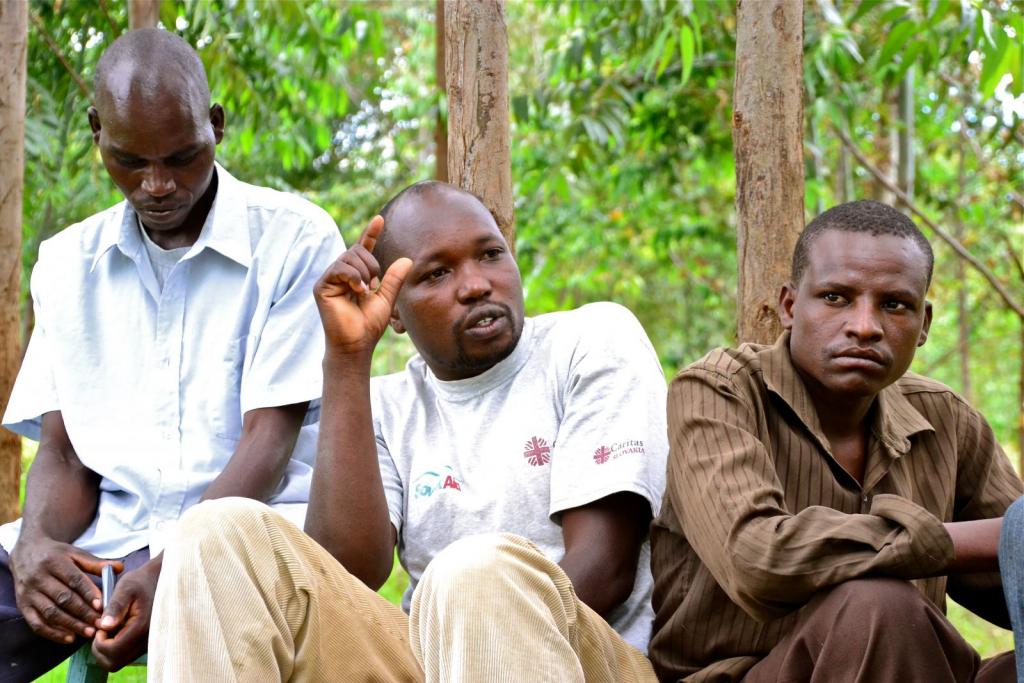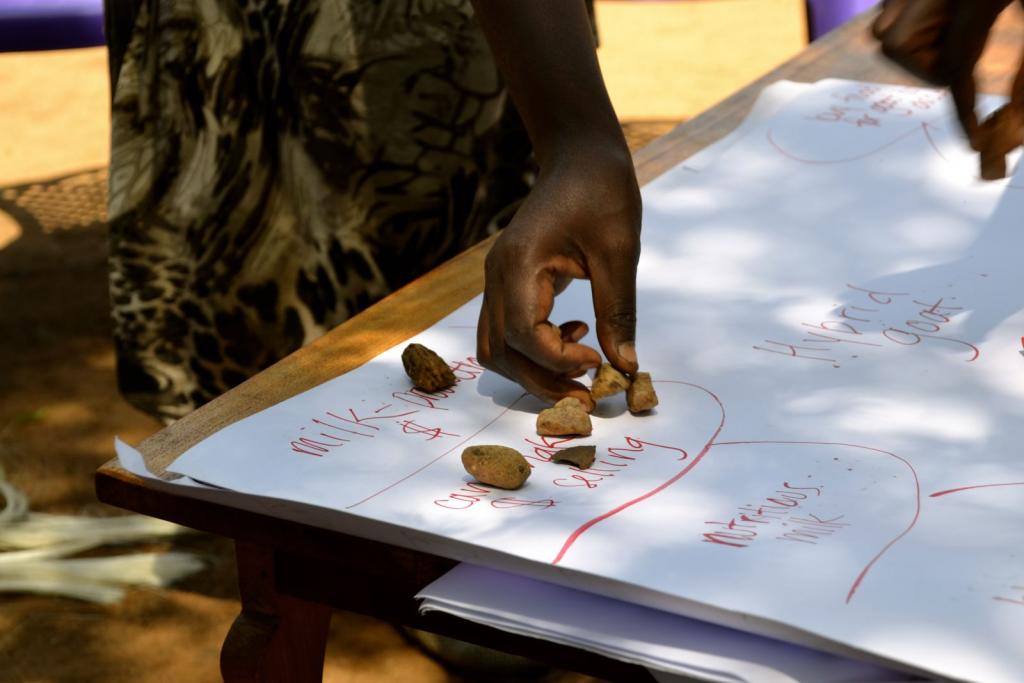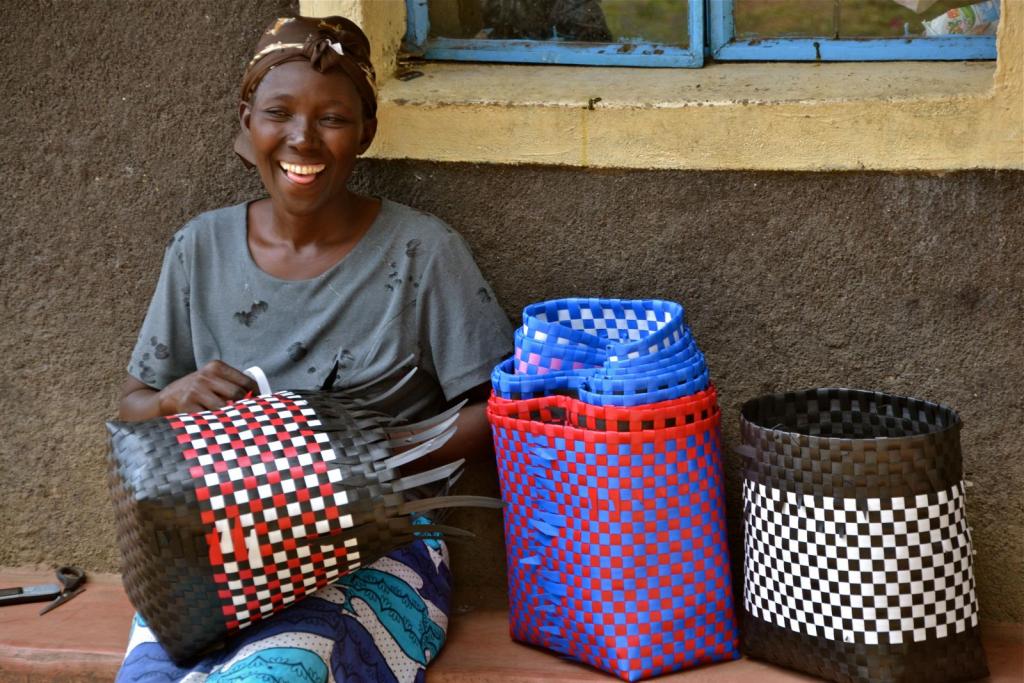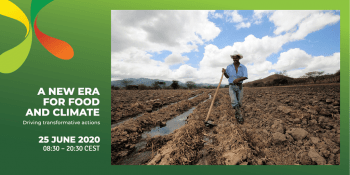Uncovering gender perceptions and beliefs in the hunt for climate information

“The men tell us that they weave baskets and ropes to sell?" The women of Lower Kamula village in Kenya look at each other and laugh in amusement. “They do, but they don't sit down for long. For us, it is our main source of income.”
This difference in perceptions on roles and responsibilities did strike us, a team from CCAFS testing an upcoming gender manual, as very interesting. It is hard however to tell which tale is the right one.
What we do know is that for the women this income generating activity is central. One woman farmer said that when the drought was at its worst, she kept weaving baskets and making ropes in order to pay for food for the household. This was not something we caught among the men.
If you want to know more about research on closing the gender gap in farming under climate change:
Making baskets is one important income-generating activity in rural villages in western kenya. photo: C.Schubert
Finding potential gender differences through participatory methods
The Gender Toobox with participatory, gender-sensitive, action research methods will be released later this year.
Led by CCAFS, it is the product of multiple partners, including CARE, WeEffect and the Food and Agriculture Organization (FAO). Tested in both Kenya and Ghana, it builds on a previous gender, agriculture and climate research manual released in 2012 by FAO and CCAFS.
So how did these gender-based discussions around basket weaving and rope making come about?
Researchers from CCAFS are currently testing an upcoming practitioner’s guide for gender and social research in Western Kenya and in Ghana together with partner CARE.
The guide includes several participatory action research modules that will help researchers and development workers find and analyse gender and social differences in rural communities related to climate change and agriculture.
Learn more: Coming soon: a gender and climate change manual made by many
Are men and women experiencing climate change the same way?
The idea with this particular participatory session is to pick up potential differences between men and women on how they perceive changes in the climate.
The session also helps researchers find out how men and women are responding to these changes (by turning to alternative income generating activities like basket weaving), and if gender in some instances might be a hindernace to the adoption of new climate-smart agricultural practices or other activities.
When we discussed how the weather has changed in the past 10 years, both the men and women in Lower Kamula village experienced these changes fairly similar. Both groups said they had experienced a decrease in rain but a higher intensity when the rains did come. Crops had failed the year before and many expressed that they had to sell livestock to provide food for the family.
In another village, a bit further up the Kenyan high hills, we were able to pick up on a few gender-specific beliefs and perceptions on roles and responsibilities that we thought were interesting.
“There is just something about the woman’s biology that can make the crops rot“
In this village, the men decided on when and how to sell animals, whereas women could only make decisions on fodder and milking, for example. Men would be the ones selling tobacco as an extra income generating activity, something that was not possible for women. Men and women could however both engage in sand harvesting, making gravel, selling vegetables and crops.
"For charcoal making, women are the ones collecting branches, but we do most of the cutting," said one man in the group discussions.
Some crops were also reserved for men, like tomatoes.
"You know, there is just something about the female biology that destroys the tomatoes," one male participant said. In the end, they were afraid that due to women's biology the tomatoes would rot if they go too near them, destroying the whole harvest. A risk they didn't want to take.

Discussions around the female biology and how it might affect crops came up as we asked men and women various farming and climate-related questions separately. Photo: C. Schubert
Due to this belief the men try to keep women from producing tomatoes. But seen as many women do grow and sell tomatoes in Western Kenya, it might be safe to say that they are not being very successful!
This is also an old belief. But despite it being old, the idea that women are unclean due to her biology, is still an idea that persists and is hampering progress around gender equality.
What are the benefits of this gender-based participatory session?
In the end, this exercise was about capturing gender differences in how climate change is experienced, which alternative activities people are turning to, to meet the challenge and who in the household makes decisions related to which new farming practices to adopt.
These methods can work both for gender-based research activities, but also for development practicioners searching for background information before they implement a new project.
The ambition of the session was also to generate a thought process about the challenges of adopting a number of other climate-smart practices and how they can be overcome. Many women and men want to change but some practices feel insurmountable to them, like getting a hybrid goat, or having the courage to test new fast-maturing crops.

Discussing obstacles to and benefits from getting a hybrid goat. Many farmers see the value of changing farm-practices, but face a number of hurdles in doing so.
Photo: C.Schubert
Linking participatory action research with traditional activities
This work forms a crucial linkage between more "traditional" scientific agricultural research, i.e. knowledge production and the work we do under Theme Linking Knowledge with Action, which is searching for ways to create change on the community level through communication, participation and partnerships.
The guide will asssit development practicioners and researchers find ways to engage with community members and gather information, while in a participatory way create more in-depth discussions about goals, gender-norms and values, climate adaptation and much more.
As we are testing the manual we are also training partners, CARE and WeEffect in how to use it, thus building capacity and momentum for Participatory Action Research.
We've shared lessons learned from previous gender participatory research in this Learning Brief: Participatory approaches for gender-sensitive research design (PDF)
Read additional story from testing the up-coming participatory guide:
- What does ‘female empowerment’ mean to women in Kenya?
- It takes a village to build climate-resilience
- Sacrificing goats and cutting down trees. A tale of climate change causes and communication
The testing was carried out by Taylor Spicer, Intern with Theme Linking Knowledge to Action, with support from Cecilia Schubert who works as a Communications officer for the same theme.
This session will be modified based on experiences testing the participatory action guide in Western Kenya and Ghana.




